A monthly review and outlook of the Global Listed Infrastructure sector.
Market review - as at October 2025
Global Listed Infrastructure built on strong ytd returns October. The best performing infrastructure sector was Other (+6%), which consists of lower quality assets like ports, satellites and merchant power. Gains in this segment were led by satellites and Emerging Markets port stocks. Toll Roads (+4%) also delivered solid returns, supported by robust earnings numbers and healthy traffic volumes.
The worst performing infrastructure sector was Energy Midstream (-8%), which fell on concerns about the sector’s growth outlook. Energy prices have been falling on weak demand, robust supply and easing geopolitical tensions.
The best performing infrastructure region was the UK (+6%), where electric and water utility stocks benefitted from lower bond yields. The worst performing infrastructure region was Canada (-3%), reflecting weakness in its large-cap energy midstream stocks.
Fund performance
The Fund returned +1.0% after fees in October1, +81 basis points ahead of the FTSE Global Core Infrastructure 50/50 TR Index (SGD).
The best performing stock in the portfolio was RWE (+12%), a German-listed utility which is transforming from a conventional power producer to one of the world's largest renewable energy generators. The company extended its recent strong run, supported by the view that its European and US renewables businesses and German natural gas-fired power plants are well positioned to benefit from rising demand for power across developed markets. National clean energy targets in the UK and Germany are also expected to prove supportive as its business evolves.
Large-cap US utility and renewables developer NextEra Energy (+8%) released better-than-expected September quarter earnings results, supported by higher electricity demand from customers of its Florida Power & Light utility business. The company also announced plans to recommission Iowa’s Duane Arnold nuclear power plant to provide electricity to Google under a 25-year power purchase agreement. US-listed renewables developer AES Corp (+7%) climbed strongly at the start of the month following reports that it may be an acquisition target for BlackRock subsidiary Global Infrastructure Partners. The news further underscores growing investor interest in electricity generation assets amid rising power demand.
US-listed data centre Equinix (+8%) gained after announcing healthy September quarter earnings numbers, reflecting robust underlying demand for its portfolio of over 250 data centres across 36 countries. Earnings Before Interest, Taxes, Depreciation, and Amortisation (EBITDA) increased 10% for the quarter while gross bookings increased 25%, signalling further growth ahead. The company also reiterated plans to build out additional data centre capacity to help meet this accelerating global demand.
Brazil’s largest toll road operator Motiva (+7%) was buoyed by solid earnings growth during the September quarter, aided by consistent traffic volumes and disciplined cost management. Broader strength in Brazil’s equity market also provided a tailwind for the stock. Australian peer Transurban (+5%) ended the month higher, benefitting from solid volumes across its urban road networks with group traffic +2.7% during the September quarter. Easing bond yields provided additional support. In contrast, Mexican operator PINFRA (-4%) gave up some of its strong recent gains after announcing disappointing September quarter earnings numbers, as higher maintenance costs weighed on margins.
The worst performing stock in the portfolio was Mexican airport operator GAP (-11%), which operates twelve airports throughout Mexico’s Pacific region, as well as Montego Bay and Kingston airports in Jamaica. The company announced weak September quarter results as lower-than-expected aeronautical tariffs offset strong performance from its commercial segment (retail, parking). Towards the end of the month, operations at the company’s Jamaican airports were disrupted as Hurricane Melissa swept through the Caribbean. Airport damage was less than feared and operations resumed in early November.
Cheniere Energy (-10%), the largest US Liquefied Natural Gas exporter, underperformed despite reaffirming 2025 earnings guidance and noting that it had bought back US$1 billion of its own shares during the September quarter – equivalent to ~0.7% of shares on issue. The stock fell as earnings numbers narrowly missed market expectations, owing primarily to slightly lower margins. Peers ONEOK (-8%) and Targa Resources (-7%) also underperformed as investors maintained a cautious stance towards the energy midstream space.
1 Fund performance is based on the Singapore unit trust, net of fees, expressed in SGD terms.
All stock and sector performance data expressed in local currency terms. Source: Bloomberg.
Fund Activity
No stocks were added to the portfolio during October, and positions in existing holdings were generally maintained at current weights.
Market outlook and Fund positioning
The Fund invests in a range of listed infrastructure assets including toll roads, airports, railroads, utilities and renewables, energy midstream, wireless towers and data centers. These sectors share common characteristics, like barriers to entry and pricing power, which can provide investors with inflation-protected income and strong capital growth over the medium-term.
The asset class remains supported by several structural growth drivers. Electric utilities, particularly in the US, face higher capital expenditure needs to meet the substantial increases in electricity demand being driven by Artificial Intelligence (AI), data centres, onshoring of manufacturing and broader electrification trends. As well as additional power plants, utilities also need to expand, modernise and strengthen electricity transmission and distribution grids. Under US utility regulation, higher amounts of capex spent in this way typically leads to rate base growth, which ultimately supports higher earnings growth.
Digitalisation is another key theme for the asset class. Data centers benefit from companies seeking the improved reliability and flexibility offered by migrating IT equipment from on-premises to a combination of colocation services and cloud computing. Additionally, the surge of interest in AI is driving data center demand, as well as boosting the need for electricity.
We expect structural growth in demand for mobile data, underpinned by increasing reliance on digital connectivity, to support steady revenue growth in the mobile tower sector. While recent consolidation activity within the US, Spanish, French and Italian telecom sectors (mobile towers’ primary customer base) has raised concerns about customer churn rates, longer-term growth drivers remain. The adoption of 5G technology over coming years will require networks to handle increased data speed, lower latency, and a much higher number of connected devices.
Continued Mergers and Acquisitions (M&A) activity and the potential divestment of non-core assets represent additional sources of support for valuation multiples across the asset class. Recent months have seen brisk corporate activity levels, driven by industry consolidation and the acquisition of public market assets by private market operators. We expect this to continue, aided by a pro-business US administration, strong demand for infrastructure assets and rising financing needs for global listed infrastructure investment programs.
Source: First Sentier Investors as at 31 Oct 2025
Global Listed Infrastructure
Infrastructure powers the world we live in – and when it comes to on-the-ground research, our team can be found on site
Investing in global listed infrastructure can offer inflation-protected income and steady capital growth from real assets delivering essential services. We search for best-in-class assets worldwide with high barriers to entry, structural growth and pricing power.
Read our latest insights
Important Information
This material is prepared by First Sentier Investors (Singapore) (Co. Reg No. 196900420D) whose views and opinions expressed or implied in the material are subject to change without notice. To the extent permitted by law, First Sentier Group accepts no liability whatsoever for any loss, whether direct or indirect, arising from any use of or reliance on this material. This material is published for general information and general circulation only and does not have any regard to the specific investment objectives, financial situation and particular needs of any specific person who may receive this material. Investors may wish to seek advice from a financial adviser and should read the Prospectus, available from First Sentier Investors (Singapore) or any of our Distributors before deciding to subscribe for the Fund. In the event that the investor chooses not to seek advice from a financial adviser, he should consider carefully whether the Fund in question is suitable for him. Past performance of the Fund or the Manager, and any economic and market trends or forecast, are not indicative of the future or likely performance of the Fund or the Manager. The value of units in the Fund, and any income accruing to the units from the Fund, may fall as well as rise. Investors should note that their investment is exposed to fluctuations in exchange rates if the base currency of the Fund and/or underlying investment is different from the currency of your investment. Units are not available to US persons.
Applications for units of the Fund must be made on the application forms accompanying the prospectus. Investments in unit trusts are not obligations of, deposits in, or guaranteed or insured by First Sentier Investors (Singapore), and are subject to risks, including the possible loss of the principal amount invested.
Reference to specific securities (if any) is included for the purpose of illustration only and should not be construed as a recommendation to buy or sell the same. All securities mentioned herein may or may not form part of the holdings of First Sentier Group’s portfolios at a certain point in time, and the holdings may change over time.
In the event of discrepancies between the marketing materials and the Prospectus, the Prospectus shall prevail.
In Singapore, this material is issued by First Sentier Investors (Singapore) whose company registration number is 196900420D. This advertisement or material has not been reviewed by the Monetary Authority of Singapore. First Sentier Group (registration number 53507290B), First Sentier Investors (registration number 53236800B), FSSA Investment Managers (registration number 53314080C), Stewart Investors (registration number 53310114W), RQI Investors (registration number 53472532E) and Igneo Infrastructure Partners (registration number 53447928J) are the business names of First Sentier Investors (Singapore).
First Sentier Investors (Singapore) is part of the investment management business of First Sentier Group, which is ultimately owned by Mitsubishi UFJ Financial Group, Inc. (“MUFG”), a global financial group. First Sentier Group includes a number of entities in different jurisdictions.
To the extent permitted by law, MUFG and its subsidiaries are not responsible for any statement or information contained in this material. Neither MUFG nor any of its subsidiaries guarantee the performance of any investment or entity referred to in this material or the repayment of capital. Any investments referred to are not deposits or other liabilities of MUFG or its subsidiaries, and are subject to investment risk, including loss of income and capital invested.
© First Sentier Group
Get the right experience for you
Your location :  Singapore
Singapore
Australia & NZ
-
 Australia
Australia -
 New Zealand
New Zealand
Asia
-
 Hong Kong (English)
Hong Kong (English) -
 Hong Kong (Chinese)
Hong Kong (Chinese) -
 Singapore
Singapore -
 Japan
Japan

















 United Kingdom
United Kingdom 